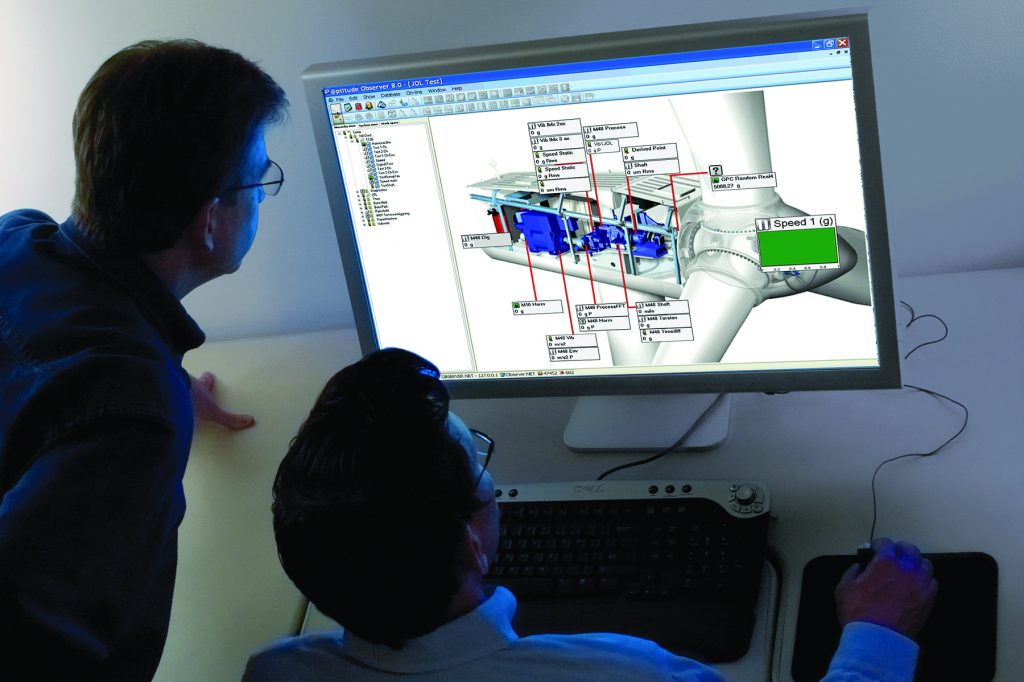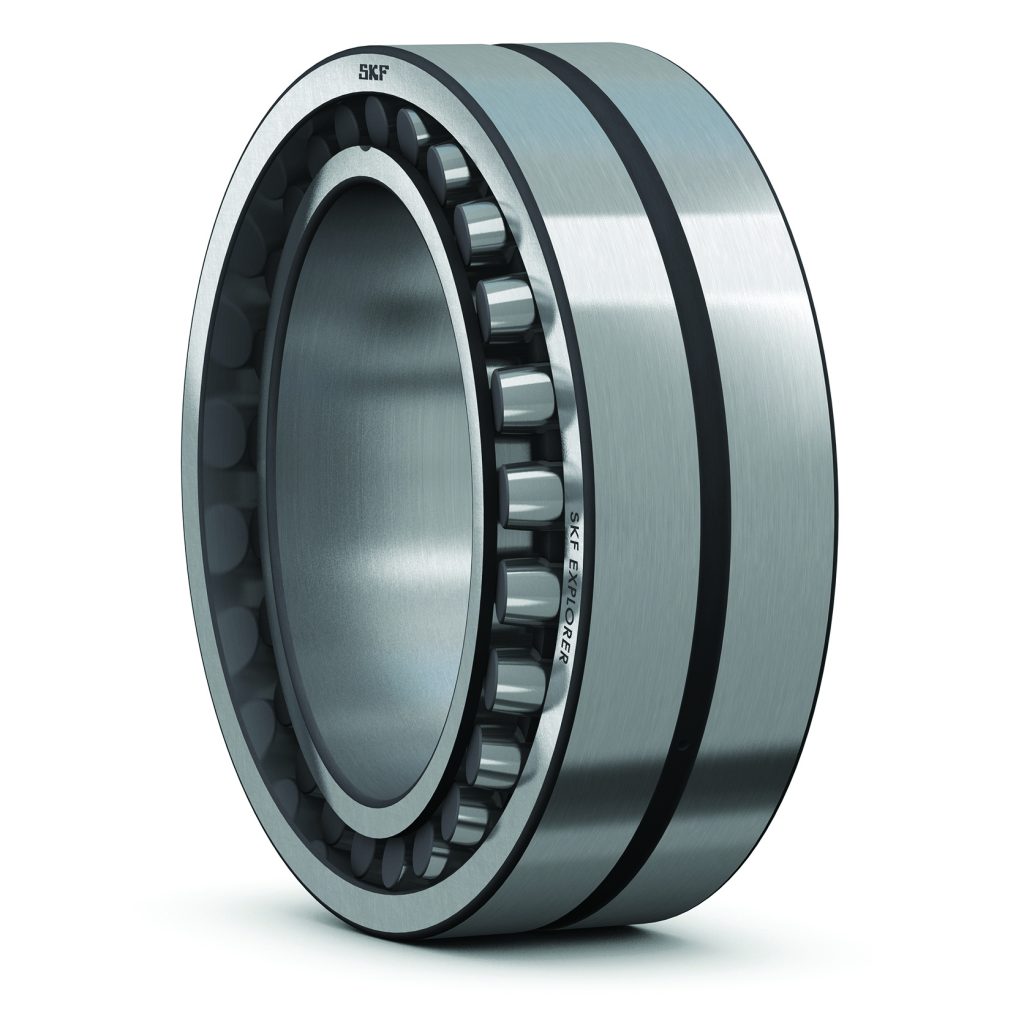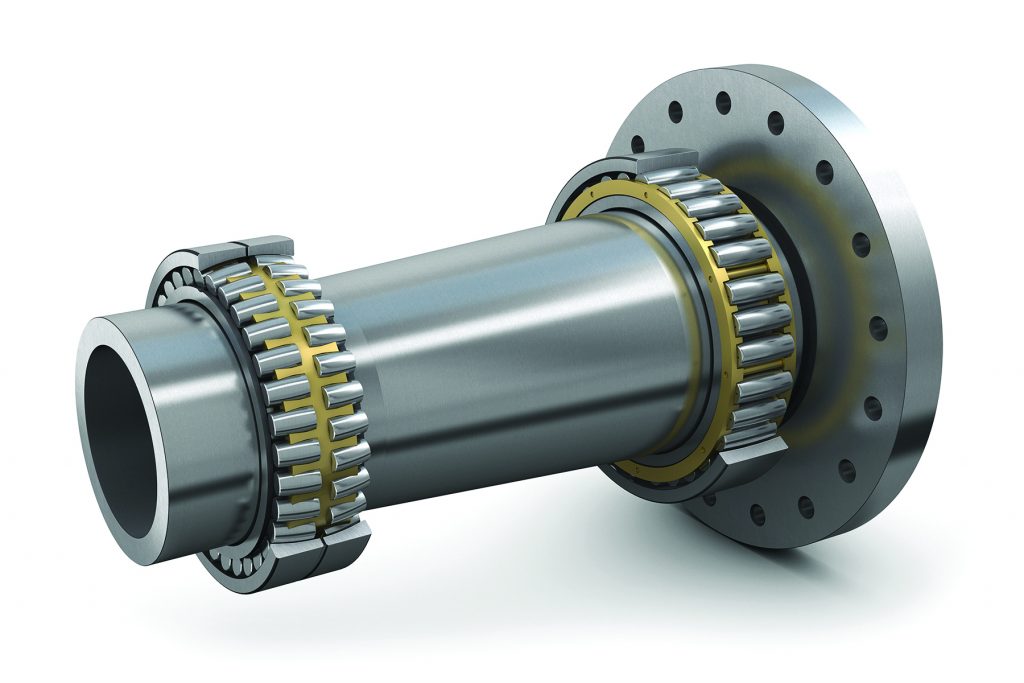While wind-turbine functionality relies upon fully operational rolling bearings, these precision components typically will be buffeted by a wide variety of adverse — sometimes extreme — operating conditions and environments. As a result, damage modes can develop, potentially jeopardizing bearing performance and service life and, in turn, a turbine’s reliability and productivity.
Fully understanding common failure modes in turbine bearings can be a challenge, especially since every premature bearing failure will be unique due to the many possible causes in the context of particular operating conditions. Despite the challenges, there are ways to reduce the likelihood of premature bearing failures, minimize maintenance and operating costs, promote extended bearing service life, and, ultimately, help keep turbines up-and-running as intended.

Bearing types and applications
In general, bearings in rotating equipment serve to support shaft loads, reduce friction with rolling elements, and provide shaft location and system flexibility/rigidity. For wind turbines, distinctly designed bearing types have been engineered to meet application demands. Among the types:
Spherical roller bearings: Typically have two rows of rollers running in two raceways. This design enables them to withstand high radial and axial loads and reduce friction and heat, while being forgiving to misalignment and flexible system conditions. They are most commonly used to support the main shaft of a wind turbine.
Cylindrical roller bearings: Are most commonly used in gearboxes and generators. They can also be used as main shaft bearings. Their design can range from single roller row versions (which can withstand slightly lower radial loads at higher speeds) to designs with up to four roller rows (supporting very high radial loads at moderate speeds).
Tapered roller bearings: Incorporate conically shaped rollers in up to four rows and tapered inner and outer raceways. The intricate design typically suits positions requiring rigidity and high running accuracy, while reducing vibration. Due to their durability, these bearings will be used in a turbine’s main shaft and in gearbox applications where high thrust load to radial load ratios exist and high system rigidity is required.
Deep groove ball bearings: Facilitate radial and axial loads in both directions. A deeper groove enables them to deal with higher speeds ideally suiting electric motors and generators in turbines.
Slewing bearings: (with large standard diameters of 3 to 6 meters and gear teeth on inner/outer rings) Feature multiple rows of balls/rollers and are especially robust to withstand slow-speed/oscillating conditions and harsh weather conditions. These types of bearings allow for the turbine blades to pitch back-and-forth at a controlled pace for controlled energy output. In addition, this type of bearing will be used in yaw position to control a nacelle’s direction during operation.
Signs of failure
The reliability of equipment always stands tall as a central challenge for wind-farm operators, and the reliability of bearings at all points in a wind turbine is a critical part of the mix. Failure modes can occur — due to various root causes — and threaten bearing performance and reliability at every turn. Among the most commonly encountered failure modes:
Cracks with white etching (often called WECs, or white etching cracks) can develop in bearings at multiple wind turbine gearbox locations — especially prevalent in larger megawatt and multi-megawatt class wind turbines. Such cracks (occurring at the end of the failure chain) develop within the microstructure of bearing steel and appear white when acid-etched. This can be detected microscopically on a bearing’s subsurface.
Their origin, based on bearing failure analyses, often can be traced to a bearing’s rolling contact fatigue and to physical parameters that can accelerate rolling contact fatigue. The fatigue may be caused by higher stresses than anticipated (driven by heavy moment loads, friction and heat, and/or misalignment and other physical factors) or by diminished material strength (due to environmental factors, including water contamination, corrosion, and/or stray electrical currents).
Pre-emptive recommendations: Bearings manufactured from premium steel and with compressive residual stresses induced by previous loading can help counteract the imposed higher stresses contributing to fatigue. Protections to reinforce the strength of a bearing’s material, depending on the conditions, include specialized protective surface treatments and coatings, hybrid bearings integrating extremely hard and durable ceramic rolling elements, and high-strength stainless steel for corrosion resistance.
Adhesive wear (also known as smearing or scuffing) occurs when two inadequately lubricated surfaces slide against each other, causing material to be transferred from one surface to the other. In addition, the resulting friction can heat the material to temperatures that cause re-hardening. Both these effects alter the microstructure of a bearing’s rollers and raceways, creating increased stress, excess friction, and unwanted heat leading to degeneration. Over time, these factors will wear a bearing to a point where it is no longer functional.
Pre-emptive recommendations: A specialty black oxidation treatment applied (by the bearing manufacturer) to a bearing’s inner and outer rings and rolling elements can provide resilience and protection against adhesive wear (as well as for several other failure modes). Bearings with such surface treatments can be deployed as replacements and upgrades in existing turbine installations, since dimensions will be unchanged from originally installed bearings.
Micropitting (or surface distress) presents as incredibly small cracks that gradually increase in size and interrupt the smooth running of a bearing. This degradation is usually caused by inadequate lubrication and commonly occurs in main shaft bearings and wind-turbine gearboxes — affecting not only the bearings, but also the gear teeth. The resulting damages impair a bearing’s function and cause concentrated stresses and high frictional heat. Once initiated, the damage progresses very quickly, leading to loss of bearing function, spalling (the flaking of bearing material), and failure.

Pre-emptive recommendations: Proper lubrication management and daily practices can help prevent these conditions. Maintenance staff should guard against over-greasing or under-greasing, using the wrong lubricant, and/or mixing incompatible lubricants, while properly lubricating when the time is right and keeping watch for deteriorating grease or oil, water contamination, and particulate contamination. Proper sealing design to maintain appropriate levels of lubricant availability goes a long way in mitigating lubrication starvation.
Moisture corrosion forms when water or corrosive agents reach the inside of a bearing. When lubricant is not providing sufficient protection for a bearing’s steel surface, rust can begin to develop, damaging the bearing. Free water presents a high risk to a bearing and it takes only a small amount of water to significantly shorten service life.
Pre-emptive recommendations: Corrosion can be avoided by correctly sealing the areas where bearings are located. Implementing a humidity control system and proper component design against occurrence of condensation within a system may be appropriate as proactive options.
Emerging trends
Several encouraging trends demonstrate that progress is being made toward helping wind-farm operators reduce maintenance costs and extend the lifecycle of components, including bearings.
Improved testing: While components in turbines undergo thorough testing before being placed into operation, parts historically have been evaluated individually instead of how they will work together with other components in a system. This approach is changing with more detailed testing involving all interacting components and the use of advanced simulation of conditions to mirror real-world turbine applications.
Automatic lubricant delivery systems: One of the most important steps on the road toward proper lubrication is deciding how to deliver lubricant effectively to all the lubrication points in a nacelle. Traditional manual-lubrication tools have been augmented with automatic lubrication systems for various locations in a wind turbine. These single-point or centralized multi-line lubrication systems have been engineered to dispense exact and clean quantities of the appropriate amount of lubricant where and when required — lifting a heavy burden from the shoulders of maintenance staff.

Extended roles for condition monitoring: Condition monitoring technologies have increasingly served to enable early detection of operating abnormalities in rotating equipment, including wind turbines. Abnormalities are identified based on measurements of various physical operating parameters, including vibration, temperature, displacements, and others. The measurements make it possible to pinpoint problems with bearings and other components before they can escalate to failure and to make pre-emptive remedial fixes.
The role of condition monitoring is expanding with a capability to detect a turbine’s power output, which may be placing components under too much strain. By monitoring power output, operators can adjust the power output as necessary to potentially extend the operational life of main shaft and gearbox bearings by up to five years.
Turbine failure is not an option for wind-farm operators, and a first line of defense is to protect bearings against common failure modes and, in the process, minimize operation and maintenance costs. Partnering with a knowledgeable bearings specialist can help in implementing the best practices to sustain any installation.
























